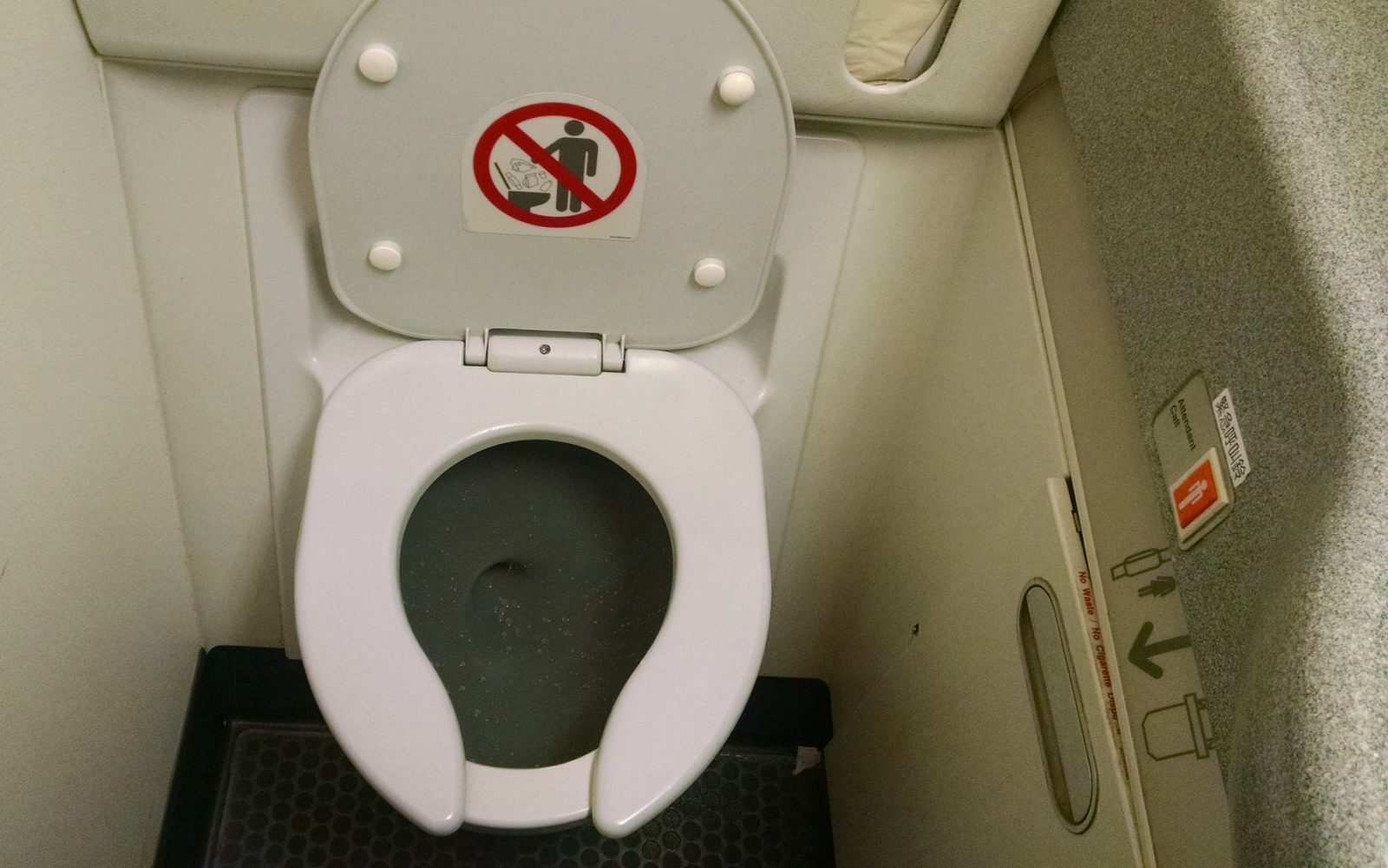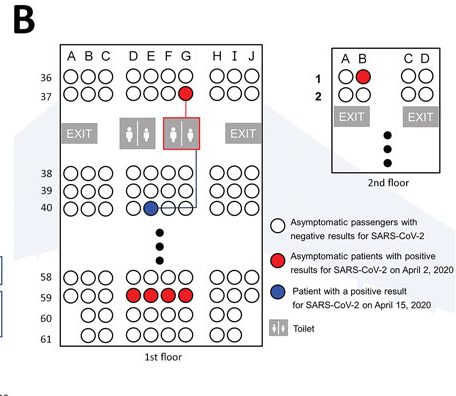
You’re likely most at risk of catching COVID-19 on an airplane when using the lavatory researchers have concluded, saying that contaminated surfaces touched by different passengers in the small space is the most plausible way to be infected with the virus that causes SARS-CoV-2.
Head researcher, Dr Sung Hwan Bae from the Soonchunhyang University College of Medicine in South Korea has again reminded passengers to wear a face mask during the entire flight, maintain good hand hygiene and to practice social distancing during boarding and deplaning.

Dr Bae’s findings were recently published by the U.S. Centers for Disease Control and Prevention (CDC) after his research team looked at possible asymptomatic transmission of COVID-19 between passengers. The team studied a controlled evacuation flight from Milan to Seoul, South Korea on March 31 at the height of the Coronavirus pandemic in Europe.
299 passengers boarded the flight after temperature tests weeded out 11 symptomatic travellers. During the flight, all passengers had to wear N95 respirator masks except for during meal times and when they were using the lavatory. On arrival, they were all tested for COVID-19 and put into quarantine.
Six passengers who reported no symptoms subsequently tested positive for the virus.
By day eight of the two-week quarantine, a lone female passenger who had originally tested negative started to feel unwell. A test confirmed she was infected with COVID-19. The time frame for displaying symptoms would suggest she was infected on the flight – especially as she self-isolated for three weeks before the evacuation flight and got private transport to the airport.
Although the passenger was sat just three rows away from one of the originally infected travellers, researchers found that the onboard HEPA filters significantly reduce the risk of airborne infection. Instead, they believe contact with contaminated surfaces or with infected passengers during boarding and deplaning “play a critical role in inflight transmission”.
Both passengers used the same lavatory on this flight and that’s where infection is likely to have taken place.
The study assumes that the risk of onboard infection has already been reduced by stopping symptomatic passengers from flying, making everyone wear a face mask, and practising physical distancing during boarding and deplaning. The latest research again highlights the importance of maintaining excellent hand hygiene to reduce the risk of infection.
Airlines have stepped up cleaning efforts in the face of the threat posed by COVID-19 but most of those efforts are concentrated on the time between flights, rather than during the flight. And while some carriers are cleaning lavatories every 30 minutes, even that might not prevent infection.
Despite this new study, the chance of catching COVID-19 on an airplane remains surprisingly low. It does, however, prove just how important maintaining good hand hygiene is.
Mateusz Maszczynski honed his skills as an international flight attendant at the most prominent airline in the Middle East and has been flying ever since... most recently for a well known European airline. Matt is passionate about the aviation industry and has become an expert in passenger experience and human-centric stories. Always keeping an ear close to the ground, Matt's industry insights, analysis and news coverage is frequently relied upon by some of the biggest names in journalism.







